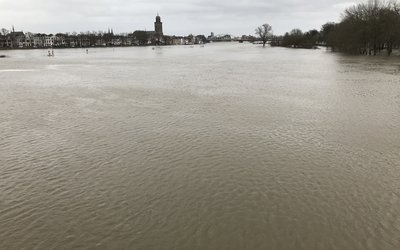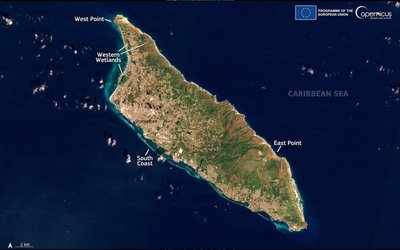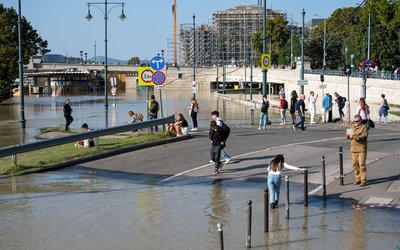What is causing increased disaster losses, societal change or climate change?
February 17, 2023

Photo: Flooding in Pakistan, 2022 (European Union, Abdul Majeed, www.flickr.com)
Loss and damage by climate change?
Increasing economic losses from extreme weather are often attributed to more frequent or more intense extreme weather events due to climate change. Is this correct? The answer to this question is extremely relevant now that developing countries call upon the developed countries to pay for the damage they are suffering from these extreme events, and now that nations agreed to provide “loss and damage” funding for vulnerable countries hit hard by climate disasters at the COP27 climate change conference in 2022.
Normalisation studies
The answer to this question can be found by analysing a multi-year dataset on extreme weather-related damage, removing the effects of changing societal factors in these data and adjusting data to a common base year. This way, the effects of population and economic growth are no longer part of the multi-year dataset and any trend that remains in these data must be related to the changing climate. This is called ‘normalisation’. These kinds of analyses have been carried out for data on various kinds of extreme weather events and for various world regions. In a recent study, 53 of these normalisation studies – focused on data from 1998 to 2020 – have been evaluated to find out what scientists generally conclude. Most of these studies focus on floods and storms, accounting for more than 90% of total global weather-related losses.
Past economic losses not due to climate change
The conclusion of this evaluation may come as a surprise: for only one of these 53 normalisation studies increased economic losses could be related to the effects of human-caused climate change. This conclusion agrees with conclusions in previous IPCC reports. In a special report on extreme events, the IPCC (2012) concluded that ‘there is medium evidence and high agreement that long-term trends in normalised losses have not been attributed to natural or anthropogenic climate change’. In its fourth assessment report in 2014, the IPCC concluded that ‘increasing exposure of people and economic assets has been the major cause of long-term increases in economic losses from weather- and climate- related disasters (high confidence)'.
Extreme weather attribution studies
Recently, in addition to these normalisation studies, so-called ‘extreme weather attribution’ studies have been and are being carried out to look at individual extreme weather events more closely. Where normalisation studies try to detect trends, attribution studies assess whether detected trends can be related to climate change. They do so by comparing climate model projections with and without human forcings of the climate system and establishing whether human-caused climate change has made a particular event more likely.
We do see a climate change ‘fingerprint’
Indeed, for several recent extreme weather events a ‘fingerprint’ of climate change has been found. The question that pops up is how to interpret these ‘fingerprints’ when no climate change effect has been detected yet in the incidence of these events in previous decades. The most logical explanation is that these extreme events have indeed become more likely because of climate change but that this increased likelihood cannot yet be detected in the multi-year records so far. It is to be expected, then, that we will see the impact of climate change on increasing economic losses at some point in the future.
We may have already reached this point. In its most recent report the IPCC concluded that ‘widespread, pervasive impacts to ecosystems, people, settlements, and infrastructure have resulted from observed increases in the frequency and intensity of climate and weather extremes, including hot extremes on land and in the ocean, heavy precipitation events, drought and fire weather (high confidence)’, and that ‘increasingly since AR5, these observed impacts have been attributed to human-induced climate change particularly through increased frequency and severity of extreme events.’
Current loss and damage may be due to climate change
The conclusion from the evaluation of the 53 normalisation studies is that ‘societal change not climate change is the overwhelming cause of increased disaster losses.’ Judging by the recent extreme weather attribution studies and the recent IPCC statement, I feel that this conclusion holds for previous decades but no longer for the situation of today.
Source: Pielke (2021). Environmental Hazards 20 (2): 93-111. And: IPCC (2012, 2014, 2022)








